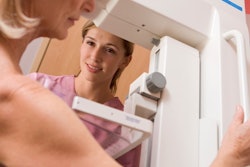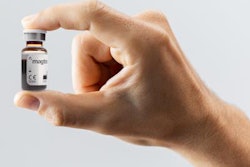
For how long should older women continue to receive breast screening? Most guidelines suggest stopping at age 75, but would women benefit from screening after that? A new study published November 22 in the Annals of Internal Medicine offers some guidance.
Researchers found that offering screening mammography every two years to healthy women up to 80 years old was cost-effective, but annual screening might not be. And neither interval prevents that many deaths, while also incurring harms associated with screening, according to a team led by Dr. John Schousboe, PhD, from Park Nicollet in Minnesota.
"Women considering screening beyond age 75 years should weigh the potential harms of overdiagnosis versus the potential benefit of averting death from breast cancer," Schousboe and colleagues wrote.
The U.S. Preventive Services Task Force (USPSTF) recommends biennial screening mammography for women up to 74 years, but the organization says there is insufficient evidence to recommend screening beyond that age. Previous research suggests that biennial screening mammography between the ages of 70 and 79 years reduced breast cancer death at sensible cost and that screening beyond 80 years for healthy women may be reasonable.
Schousboe et al wanted to estimate the cost-effectiveness of extending screening mammography beyond age 75 to age 80, 85, or 90. They focused on the effects of comorbidity on the cost-effectiveness of annual mammography, which is the most commonly used screening frequency for U.S. women.
The team looked at data from the used data from the Surveillance, Epidemiology, and End Results (SEER) program and the Breast Cancer Surveillance Consortium and used a microsimulation model to track costs and survival for the women.
The model classifies women by Charlson comorbidity scores, with a score of 0 meaning no comorbidities and higher scores indicating more comorbidities. The researchers then analyzed the number of lives saved based on different comorbidity scores.
The group found that annual mammography beyond age 75 reduced breast cancer deaths slightly more than biennial mammography, but the approach also had a greater burden of overdiagnosis -- nearly 2.5 times higher. More biopsies were required to work up false-positive results, the study authors found.
Extending the age at which annual mammography stopped from 75 to 80 cost more than $100,000 per quality-adjusted life year (QALY) gained at all levels of comorbidity.
"Our study may inform new screening mammography guidelines for older women and supports some current guidelines regarding screening of women after age 75 years," the researchers wrote.
In an accompanying editorial, Dr. Otis Brawley from Johns Hopkins University in Baltimore wrote that it is "unlikely" that cost-effectiveness studies like this will stop annual screening mammography practices. However, he noted that such studies may spur development for risk-based screening models.
"Risk-based screening, considering the subject's health status and personal breast cancer risk using polygenic testing, epidemiologic risk calculators, breast density, or a combination, might be an acceptable compromise to our current inefficient practices," Brawley wrote.



















